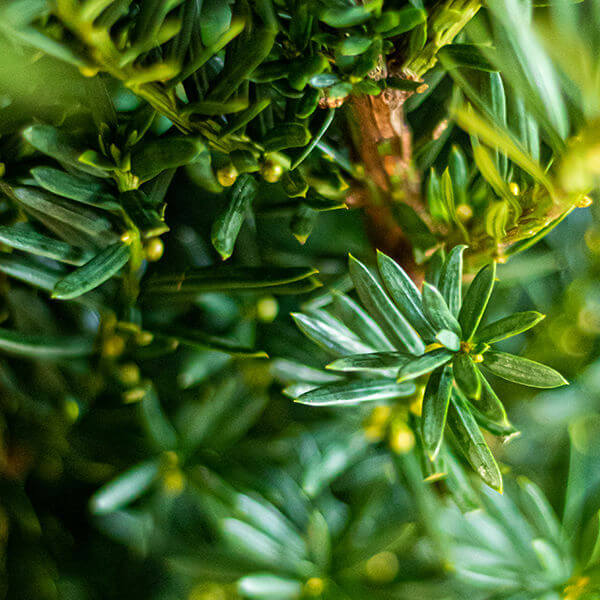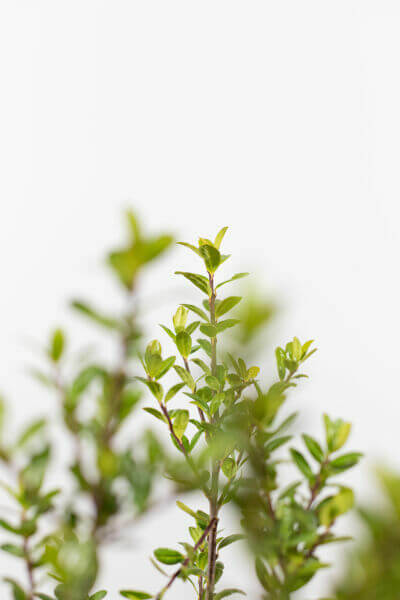Hedge Plants For Protecting Gardens
Hedge Plants For Protecting Gardens
Blog Article
Hedge Plants For Ornamental Hedges
Boost your garden's attraction with rich hedge varieties such as Yew (Taxus), Thuja, Laurel, Photinia, and Bamboo, commemorated for their structural integrity and ecological benefits.
Yew and Thuja offer evergreen protection and winter durability, while Laurel uses fast development and broad, aromatic leaves.
Photinia adds seasonal appeal with its lively red foliage, and Bamboo lends a low-maintenance, serene atmosphere.
These hedges improve air quality, lower noise, and produce tranquil, personal areas.
Proper planting, spacing, and upkeep make sure vigorous growth and environmental harmony.
Explore how these rich ranges can elevate your garden's beauty and well-being.
Secret Takeaways
Change Your Garden With Lush Hedge Ranges
- Select Yew for its thick, evergreen growth and unrivaled durability.
- Choose Laurel for its fast growth and broad leaves, guaranteeing fast personal privacy.
- Pick Photinia for its vibrant seasonal foliage, which turns a striking dark red.
- Utilize Bamboo for a low-maintenance, winter-hardy hedge with aesthetic appeal.
- Space plants 2-3 per meter and prune routinely for optimum development and health.
Popular Hedge Plants
When transforming a garden with lush hedge varieties, it's important to consider popular hedge plants such as Yew, Thuja, Laurel, and Photinia due to their unique characteristics and benefits.
Yew (Taxus) is highly esteemed for its longevity and dense, green growth, making it a prime choice for withstanding landscapes.
Thuja is noted for its evergreen foliage and robust winter resilience.
Photinia adds seasonal vibrancy with red leaves that darken with time, developing vibrant visual appeal.
Laurel uses fast development and aromatic, broad leaves, suitable for quick privacy.
Additionally, Bamboo is an excellent option for atmosphere, providing a low-maintenance, winter-hardy choice that enhances the garden's visual with its stylish, swaying canes.
These selections deal with a range of horticultural needs and preferences.
Advantages of Garden Hedges
Garden hedges provide a wide range of benefits, making them an important addition to any landscape. These natural barriers are economical to execute and provide substantial wind security, enhancing air blood circulation and adding to noise decrease. The dense foliage of hedges like Thuja and Beech ensures personal privacy by obstructing visibility, developing a peaceful and secluded environment.
Hedges likewise play an essential function in microclimate policy, providing a steady environment that fosters plant growth and lessens temperature variations. Their elaborate leaf structures filter toxins, improving air quality and adding to a healthier garden community.
Moreover, hedges stand out in sound reduction, soaking up and deflecting sound waves to lower ambient sound levels. This dual functionality of supplying both visual and acoustic personal privacy enhances the general harmony and visual appeal of any garden.
Planting and Maintenance Tips
For a successful hedge, precise preparation of the planting location is crucial. Guarantee the soil has correct pH and drain to support strong root development.
Area the plants appropriately for the selected types. Water the hedge frequently throughout its preliminary development phase, adjusting as required with seasonal modifications.
Implement a methodical bug control and disease prevention technique, utilizing chemical or organic treatments when required. Routinely check for aphids, mites, and fungal infections.
Apply mulch to keep wetness and reduce weeds. Seasonal pruning promotes dense growth and air flow, vital for plant health.
Following these standards will assist you cultivate a lively, properly maintained hedge that enhances the charm of your garden.
Spacing and Cutting Standards
Spacing and Cutting Standards
Correct spacing and cutting are vital for cultivating healthy, aesthetically appealing hedges. Appropriate spacing makes sure each plant gets enough nutrients, light, and air flow.
Follow these guidelines for optimal hedge maintenance:
- Spacing: Position hedge plants 2-3 plants per meter to motivate robust development.
- Pruning Strategies: Routine pruning is vital for preserving preferred hedge height and shape. Trim new growth in summer season and cut back older wood during winter season.
- Seasonal Care: Change trimming schedules and techniques according to seasonal requirements to ensure plant health.
- Hedge Height: Regularly display and cut to preserve the desired hedge height and achieve consistent looks.
Adhering to these actions will guarantee your hedge flourishes, enhancing both the appeal and performance of your garden.
Selecting the Right Hedge
Choosing the Right Hedge
Picking the suitable hedge involves assessing factors such as fully grown height, foliage density, and environmental resilience. Effective hedge plant selection requires comprehending each species' growth attributes and site-specific versatility.
For instance, Yew (Taxus) provides excellent durability and dense development, while Thuja website is notable for its winter strength. Furthermore, considering maintenance requirements is crucial; fast-growing types like Laurel or Privet need regular cutting, whereas low-maintenance choices like Bamboo or Ivy may be more suitable for those looking for very little upkeep.
Ecological factors such as soil type, light accessibility, and moisture conditions must likewise guide the choice procedure. This cautious technique ensures the picked hedges will thrive, offering both practical and visual benefits to the garden landscape.
Delivery and Planting Suggestions
To ensure your hedge plants thrive, they need to be delivered by specialized carriers and planted without delay upon arrival.
Follow these important actions for effective planting:
- Soil Preparation: Improve the soil with raw material to improve drain and nutrient material.
- Planting Depth: Produce a trench two times the width and equivalent to the depth of the root ball.
- Watering Techniques: Water thoroughly after planting, keeping the soil consistently damp however not filled.
- Mulching: Use a layer of mulch to retain moisture and suppress weeds.
Client Assistance and Service
Offered the crucial role of timely assistance in horticultural pursuits, our client support team is offered 6 days a week through telephone, e-mail, and social networks to use expert guidance and quickly attend to any issues. Their commitment to fast reaction times guarantees client fulfillment by solving questions connected to plant health, optimum planting approaches, and upkeep schedules.

Within 24 hours
This thorough support system, reinforced by an outstanding 9.3/ 10 client score, highlights our dedication to boosting the gardening experience for every single customer.
Regularly Asked Concerns
The Length Of Time Does It Consider Hedge Plants to Develop?
Hedge plants usually need one to 3 years to end up being totally developed, with the specific period varying by species and growing conditions.
Reliable care throughout this important duration is vital for robust growth. Consistent watering, vigilant weed control, and appropriate fertilizer application are pivotal in promoting strong root advancement.
For instance, fast-growing types like Laurel may establish faster, while slower-growing ranges such as Yew may take longer. Persistent maintenance accelerates the facility procedure, leading to thick and healthy hedges.
What Are the Best Hedge Plants for Personal Privacy?
The concern of the very best hedge plants for privacy includes examining evergreen and deciduous choices.
Evergreen hedges like Thuja, Laurel, and Cypress provide year-round protection, making sure continuous privacy.
On the other hand, deciduous hedges such as Beech provide seasonal privacy, shedding leaves in cooler months.
Key maintenance pointers for personal privacy hedges consist of regular cutting, fertilizing in spring, and appropriate spacing-- typically 2 to 3 plants per meter.
In addition, consistent watering and thorough weed elimination are crucial for promoting healthy, thick growth.
Can Hedge Plants Bring In Wildlife to My Garden?
Yes, hedge plants can draw in wildlife to your garden by supplying vital benefits like shelter, food, and nesting websites, thereby improving local biodiversity. For example, yew, holly, and laurel are outstanding for attracting birds, while ivy supports a variety of pests.
However, it is very important to note that there are some disadvantages, such as increased upkeep to manage insects and routine upkeep. Thoroughly picking and maintaining hedge ranges can assist balance these advantages and drawbacks, ultimately promoting a sustainable and vibrant ecosystem in your garden.
Exist Any Blooming Hedge Plants Available?
Yes, there are flowering hedge plants available that can boost the appeal of your garden.
For example, Elaeagnus, likewise referred to as Olive Willow, produces fragrant white flowers in the fall, including a touch of sophistication.
Photinia, another popular choice, showcases vibrant red leaves that develop into an abundant green, developing a dynamic visual impact throughout the seasons.
To guarantee these plants grow, it's necessary to practice appropriate pruning methods and seasonal upkeep, such as cutting brand-new growth in the summer and cutting back in the winter.
These steps will assist keep the health and visual appeal of your blooming hedges.
How Do I Avoid Bugs in My Hedge Plants?
To avoid bugs in hedge plants, use natural bug control approaches and keep correct hedge care. Present beneficial pests like ladybugs, which victimize damaging pests, to create a balanced ecosystem.
Regularly inspect your hedges for signs of problem and promptly get rid of any afflicted parts to avoid the spread. Guarantee the health of your hedges by applying balanced fertilizers and providing appropriate water.
Make use of mulching to keep soil moisture and proper spacing to reduce plant tension and promote robust development. These practices jointly assist in lessening insect issues and keeping a healthy hedge.
Conclusion
In essence, picking the best hedge varieties such as Yew, Thuja, and Laurel can change any garden into a relaxing haven. These plants provide year-round plant, improve aesthetic appeal, and deal practical benefits like sound reduction and wind defense.
Appropriate planting techniques, precise spacing, consistent watering, and seasonal trimming are essential for ideal growth.
Reliable shipment services and expert consumer support make sure a seamless experience from purchase to planting, making it easier than ever to raise your outside space.
Garden hedges offer a wide variety of benefits, making them an important addition to any landscape. These natural barriers are affordable to carry out and provide considerable wind protection, improving air circulation and contributing to sound decrease. The dense foliage of hedges like Thuja and Beech makes sure privacy by blocking visibility, producing a tranquil and secluded environment.

Pruning Methods: Regular pruning is necessary for keeping preferred hedge height and shape. Trim brand-new growth in summer season and cut back older wood throughout winter.
Report this page